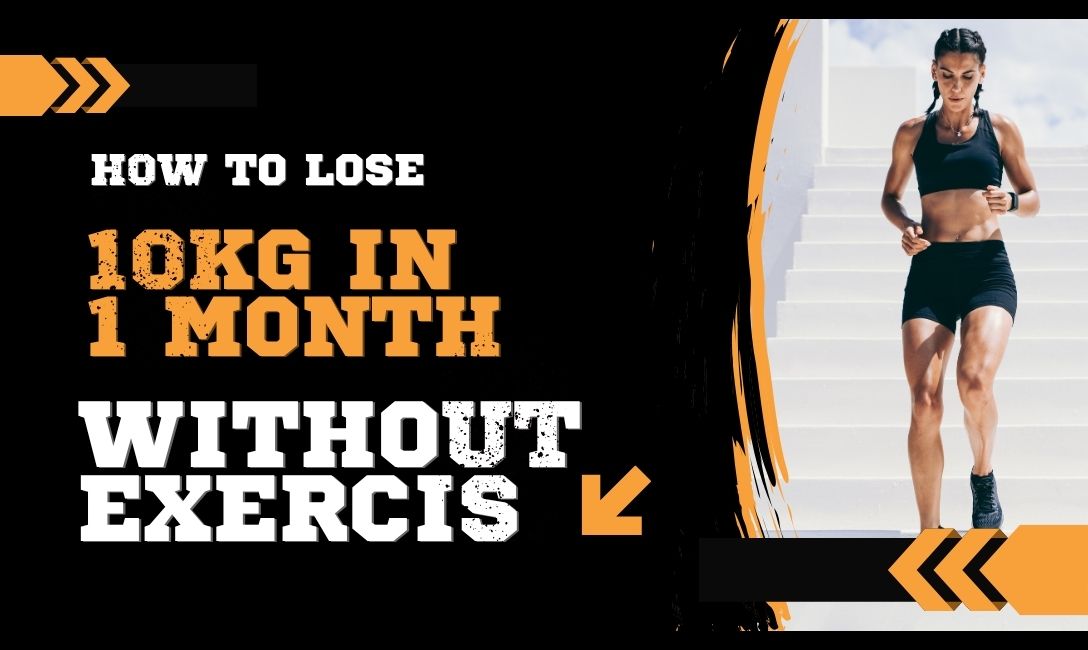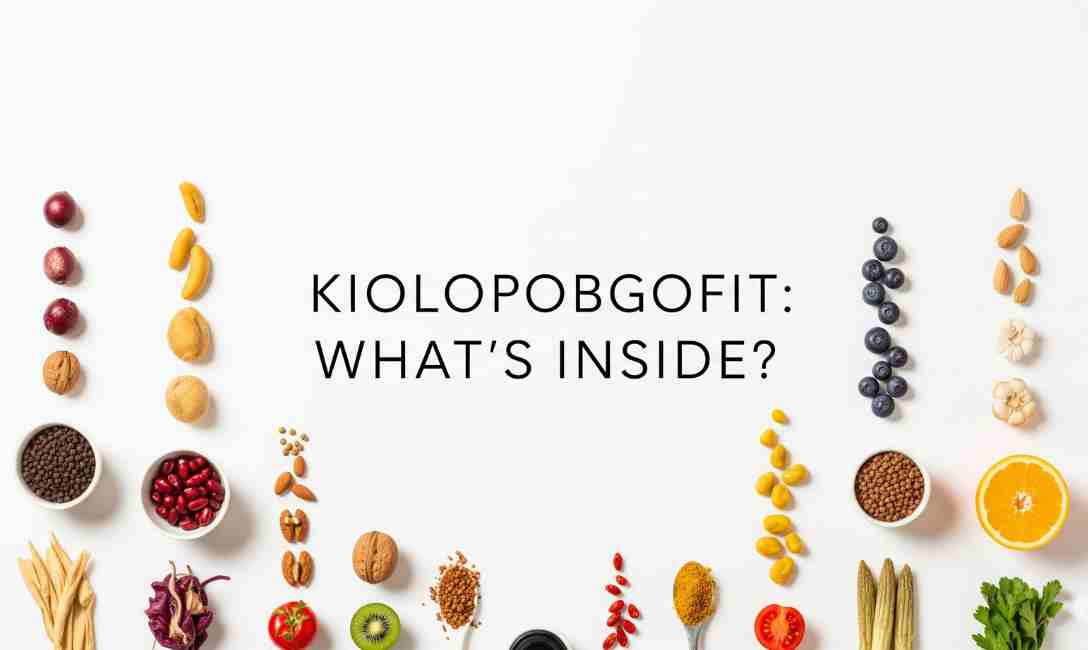Introduction
Losing 10kg (22 pounds) in just 30 days without exercise may sound ambitious, but it’s not impossible—if done safely and systematically. The key lies in understanding how your body uses energy, managing your calorie intake, and making smart dietary and lifestyle adjustments that promote fat loss. In this article we will cover how to lose 10kg in 1 month without exercise.
Whether you’re recovering from an injury, have a tight schedule, or simply want to focus on nutrition-first weight loss, this guide is for you.
Is It Safe to Lose 10kg in a Month?
Health experts generally recommend losing 0.5 to 1kg per week, or about 2 to 4kg per month, for sustainable and healthy weight loss. However, losing 10kg in 1 month can be possible under medical supervision and strict dietary control.
If you’re significantly overweight, you might lose more weight faster due to a higher starting calorie burn. However, it’s important to prioritize nutritional balance, hydration, and health over extreme diets.
Disclaimer: Always consult your doctor or a certified dietitian before making drastic dietary changes.
Before You Begin: Understand the Goal
Losing 10 kg in 30 days equals shedding approximately 2.5 kg per week, or about 8000 calories weekly (since 1 kg of fat = ~7700 kcal). That’s a deficit of over 1100 calories per day.
Without exercise, you need to strictly monitor your food intake and lifestyle habits to make this happen. However, everyone’s body is different—what works for one may not work the same for another. Always consult a healthcare provider if you have medical conditions.
Step-by-Step Guide: How to Lose 10kg in 1 Month Without Exercise
1. Switch to a Calorie Deficient Diet
To lose weight, you must eat fewer calories than your body burns. Aim to reduce your daily intake by 800–1200 calories (but don’t go below 1200 kcal/day for women and 1500 kcal/day for men without medical supervision).
Steps:
- Calculate your daily caloric needs using an online BMR calculator.
- Subtract 1000 calories from that total for aggressive weight loss.
- Plan meals to stay under your goal.
Focus on:
- High-fiber veggies (spinach, broccoli, carrots)
- Lean proteins (tofu, lentils, eggs)
- Complex carbs (quinoa, oats, brown rice)
2. Cut Out Sugar and Refined Carbs Completely
Sugar and processed carbohydrates spike insulin levels and contribute to fat storage. These are the main culprits in weight gain.
Avoid:
- Sugary drinks (soda, packed juices)
- White rice, white bread, pasta
- Pastries, sweets, biscuits
Instead:
- Opt for low-carb veggies, whole grains, and moderate fruit.
- Replace sugar with stevia or erythritol if needed.
3. Adopt Intermittent Fasting (IF)
Intermittent fasting is a powerful method to lose weight without exercise. The most popular method is 16:8, where you fast for 16 hours and eat within an 8-hour window.
Why it works:
- Fasting reduces insulin levels and increases fat burning.
- You naturally eat fewer calories by skipping breakfast.
Sample Schedule:
- Fast: 8 PM to 12 PM
- Eat: 12 PM to 8 PM (2–3 meals)
4. Drink Plenty of Water – 3 to 4 Liters Daily
Water not only keeps you full but also flushes out toxins and supports metabolism.
Tips:
- Drink a glass of water before every meal.
- Start your day with warm lemon water.
- Avoid calorie-filled beverages—choose herbal teas or black coffee.
Hydration Tip: Add chia seeds to your water to stay full longer and improve digestion.
5. Eliminate Late-Night Snacking
Eating late at night increases your chances of storing fat since your metabolism slows down in the evening.
What to Do:
- Finish your last meal by 7 or 8 PM.
- If you feel hungry later, sip on green tea or chew fennel seeds.
6. Eat More Protein and Fiber-Rich Foods
Protein reduces appetite, boosts metabolism, and preserves muscle mass. Fiber slows digestion and keeps you full.
Include in your meals:
- Lentils, beans, tofu
- Eggs, cottage cheese (paneer)
- Vegetables like cabbage, cauliflower, and zucchini
- Fruits like apples, guava, and pears (in moderation)
Pro Tip: Start your meals with a bowl of salad to prevent overeating.
7. Limit Salt and Bloating Foods
High sodium causes water retention, making you look puffy and feel heavy.
Avoid:
- Pickles, processed foods, packaged snacks
- Instant noodles, frozen meals
Instead:
- Use natural spices (turmeric, cumin, black pepper)
- Add lemon and vinegar for flavor
8. Get 7–8 Hours of Quality Sleep
Lack of sleep increases hunger hormones (ghrelin) and reduces fullness hormones (leptin). This triggers cravings and overeating.
Tips:
- Sleep and wake at the same time daily
- Avoid screens 1 hour before bed
- Use a sleep tracker to monitor progress
9. Stay Busy and Avoid Emotional Eating
Boredom and stress can lead to unnecessary snacking. Stay mentally and emotionally engaged to avoid binge eating.
What Helps:
- Keep a food journal or calorie tracking app (like MyFitnessPal)
- Practice mindful eating—chew slowly and focus on meals
- Read, learn, or do light chores during cravings
10. Use Natural Fat-Burning Aids (Cautiously)
While not a substitute for diet, some natural aids can enhance fat burning slightly.
Examples:
- Green tea extract
- Apple cider vinegar (1 tbsp in water before meals)
- Black coffee (without sugar or milk)
Note: Use with caution and never exceed safe daily limits.
Sample Daily Diet Plan (1200–1300 kcal)
Noon (Break Fast):
- 1 boiled egg + sautéed spinach in olive oil
- 1 slice multigrain toast
2 PM (Lunch):
- 1 bowl brown rice + 1 cup dal
- Mixed salad with cucumber, tomato, lemon
5 PM (Snack):
- 1 cup green tea
- Handful of roasted chickpeas
7 PM (Dinner):
- Grilled paneer/tofu with sautéed vegetables
- Clear vegetable soup
Hydration: 3–4 liters of water + 2 cups of herbal tea
Is Losing 10kg in 1 Month Safe?
While rapid weight loss can be effective initially, it may lead to:
- Nutrient deficiencies
- Gallstones
- Muscle loss
- Fatigue or irritability
Therefore, make sure to eat nutrient-dense foods and take multivitamins if recommended by a doctor. It’s also wise to continue a milder version of this plan after the first month to prevent regaining the weight.
How to Lose 10kg in 1 Month Without Exercise? Final Thoughts
It is possible to lose 10kg in a month without exercise, but it demands extreme dietary control, lifestyle discipline, and mental focus. It’s not a long-term strategy, but a jumpstart for those who need fast results, like for a wedding, special event, or health urgency.
After achieving your target, gradually transition into a sustainable lifestyle by incorporating light activity (such as walking or yoga), eating a balanced diet, and maintaining a consistent routine.
How to Lose 10kg in 1 Month Without Exercise? FAQs
Q1: Can I lose 10kg without exercise safely?
Yes, but it requires strict calorie control, a diet rich in nutrients, and self-discipline. Always consult a doctor before drastic diet changes.
Q2: Will I gain weight back after the month?
If you go back to old eating habits, yes. To maintain weight loss, adopt a sustainable diet.
Q3: Can I use meal replacement shakes?
Only occasionally. Natural whole foods are always better for long-term health.
Q4: Is intermittent fasting safe for everyone?
Generally yes, but those with diabetes, low blood pressure, or eating disorders should consult a doctor first.
Q5: How much water should I drink daily?
3 to 4 liters is ideal. Adjust based on your body weight and climate.




